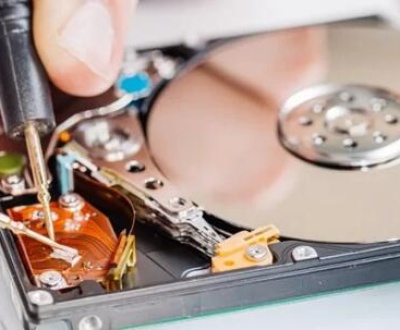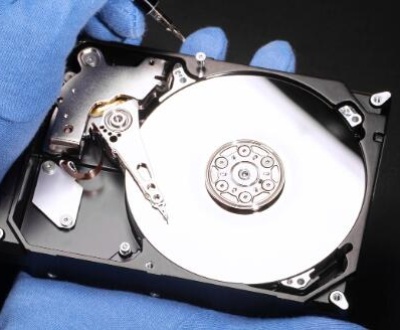External hard drives are widely used for data storage, backup, and transfer. However, encountering missing files on these devices can be a frustrating experience. This guide aims to help you understand why files may go missing, how to recover them, and how to prevent future occurrences. By following these strategies, you can maintain a more organized and reliable storage solution.
Causes of Missing Files
Before diving into recovery methods, it’s important to understand the common reasons why files may become missing from an external hard drive:
Accidental Deletion: One of the most common reasons for missing files is accidental deletion by users. Files may be deleted intentionally or inadvertently while managing data.
Corruption: Files can become corrupted due to improper ejection of the hard drive, power outages, or software crashes. Corrupted files may become invisible or inaccessible.

File System Errors: External hard drives can experience file system errors due to a variety of reasons, including improper formatting, hardware issues, or malware infections.
Malware or Viruses: Malicious software can hide, delete, or corrupt files on your external hard drive. A malware infection can lead to significant data loss.
Incompatible File Formats: Sometimes, files may not be recognized due to compatibility issues between the operating system and the file format.
Drive Not Recognized: In some cases, the external hard drive may not be recognized by the computer, making files seem missing when they are simply inaccessible.
Steps to Recover Missing Files
If you find yourself in a situation where files are missing from your external hard drive, follow these recovery steps:
Step 1: Check the Recycle Bin
If you suspect that files were deleted accidentally, start by checking the Recycle Bin (Windows) or Trash (Mac). If you find the files there, you can easily restore them.
Step 2: Reconnect the Drive
Sometimes, simply disconnecting and reconnecting the external hard drive can resolve minor connectivity issues. Ensure that:
The USB cable is securely connected.
You use a different USB port if the current one is malfunctioning.
Step 3: Use File Recovery Software
Panda Assistant is a cutting edge data recovery software designed to help users retrieve lost or deleted files from various storage devices, including external hard drives, USB drives, and memory cards. With its user-friendly interface and powerful scanning algorithms, Panda Assistant makes the recovery process accessible to everyone, regardless of technical expertise.
Comprehensive Scanning Options: Panda Assistant offers both quick and deep scan modes. The quick scan quickly locates recently deleted files, while the deep scan thoroughly examines the storage device to recover older or more complex data losses.
Multiple File Formats: The software supports a wide range of file formats, including photos, documents, videos, and audio files. This versatility ensures that users can recover virtually any type of data they may have lost.
Preview Functionality: Before committing to a recovery, Panda Assistant allows users to preview recoverable files. This feature ensures that users can select only the files they truly need, saving time and storage space.
Easy-to-Use Interface: Designed with user experience in mind, Panda Assistant features an intuitive interface that guides users through the recovery process step by step. Even those with minimal technical knowledge can navigate the software effortlessly.
Secure Recovery: Panda Assistant prioritizes data security, ensuring that recovered files are safely restored without further risking data integrity. The software does not write over existing data, maximizing the chances of successful recovery.
Multi-Platform Support: Available for both Windows and Mac, Panda Assistant is a versatile tool for users across different operating systems, making it a go-to solution for data recovery needs.
Step 4: Check Disk for Errors
If the external hard drive is recognized but files seem to be missing, there might be file system errors. Use built-in tools to check for and repair these errors.
Windows:
Open “This PC” or “My Computer.”
Right-click on the external hard drive and select “Properties.”
Go to the “Tools” tab and click on “Check” under the Error checking section.
Mac:
Open “Disk Utility” from Applications > Utilities.
Select the external hard drive and click on “First Aid” to check for and repair errors.
Step 5: Restore from Backup
If you regularly back up your files, check your backup solution. This could be a cloud service or another external hard drive. Restoring from backup is often the quickest way to retrieve lost data.
Prevention Strategies
To minimize the risk of files going missing in the future, consider the following prevention strategies:
1. Regular Backups
Implement a regular backup schedule for your important files. Use:
Cloud Storage: Services like Google Drive, Dropbox, or OneDrive provide secure off-site storage.
Local Backups: Use additional external hard drives or Network Attached Storage (NAS) to keep a local copy of your data.
2. Safe Ejection
Always eject your external hard drive safely before physically disconnecting it. This ensures that all read/write operations are complete and reduces the risk of corruption.
Windows: Right-click on the drive in “This PC” and select “Eject.”
Mac: Right-click on the drive in Finder and select “Eject.”
3. Antivirus Protection
Keep your antivirus software up to date and perform regular scans. This helps prevent malware infections that can lead to data loss.
4. Maintain a Healthy File System
Occasionally check your external hard drive for errors and perform disk cleanups to keep it in good condition. This can prevent file system corruption.
Organizing Files for Easy Retrieval
Proper organization of files can make it easier to locate and recover them in the future. Here are some tips:
1. Create a Logical Folder Structure
Design a clear and logical folder hierarchy. For example:
markdown
复制代码
– My External Drive – Documents – Personal – Work – Music – Projects – Samples – Photos – Vacations – Events
2. Use Descriptive File Names
Adopt a consistent naming convention that includes relevant details like the date, project name, or version. This makes it easier to find specific files later.
3. Tagging and Metadata
If your operating system supports it, use tags or metadata to label files. This can provide additional context and make searching for files easier.
Advanced Recovery Options
If basic recovery methods fail, consider more advanced options:
1. Professional Data Recovery Services
If the data is critical and cannot be recovered using software, consider hiring a professional data recovery service. These services can often recover data from damaged or corrupted drives. However, they can be expensive, so weigh the importance of the data against the cost.
2. Disk Imaging
If you suspect that your external hard drive is failing, create a disk image using tools like:
ddrescue (Linux)
Clonezilla (Linux)
Acronis True Image (Windows/Mac)
Creating a disk image allows you to work on a copy of the drive, preserving the original data while you attempt recovery.
Dealing with missing files from an external hard drive can be a stressful experience, but understanding the causes and employing effective recovery and prevention strategies can help mitigate this issue. By following the steps outlined in this guide, you can not only recover lost data but also protect yourself from future data loss.
Regular backups, safe ejection practices, and proper file organization are essential for maintaining the integrity of your data. In cases where files are irretrievable through conventional methods, consider professional recovery services as a last resort.
With a proactive approach to file management, you can ensure that your external hard drive remains a reliable resource for storing and accessing your valuable data.
About us and this blog
Panda Assistant is built on the latest data recovery algorithms, ensuring that no file is too damaged, too lost, or too corrupted to be recovered.
Request a free quote
We believe that data recovery shouldn’t be a daunting task. That’s why we’ve designed Panda Assistant to be as easy to use as it is powerful. With a few clicks, you can initiate a scan, preview recoverable files, and restore your data all within a matter of minutes.
Subscribe to our newsletter!
More from our blog
See all postsRecent Posts
- Data recovery salt lake city utah 2025-04-18
- Data recovery sacramento 2025-04-18
- Data recovery miami 2025-04-18

 Try lt Free
Try lt Free Recovery success rate of up to
Recovery success rate of up to









